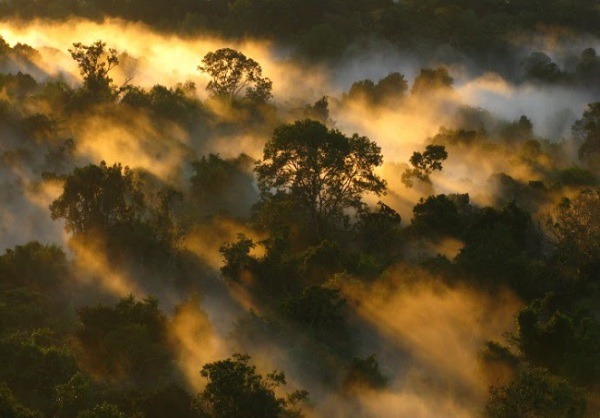Item Link: Access the Resource
File: Download
Publication Info: https://doi.org/10.1111/geb.13596
Date of Publication: January
Year of Publication: 2023
Publication City: Hoboken, NJ
Publisher: Wiley
Author(s): Diego F. Correa, Pablo R. Stevenson,, Maria Natalia Umaña et al.
Journal: Global Ecology and Biogeography
Volume: 32, Issue 1
Pages: 49-69
Abstract
Aim
To investigate the geographic patterns and ecological correlates in the geographic distribution of the most common tree dispersal modes in Amazonia (endozoochory, synzoochory, anemochory and hydrochory). We examined if the proportional abundance of these dispersal modes could be explained by the availability of dispersal agents (disperser-availability hypothesis) and/or the availability of resources for constructing zoochorous fruits (resource-availability hypothesis).
Time period
Tree-inventory plots established between 1934 and 2019.
Major taxa studied
Trees with a diameter at breast height (DBH) ≥ 9.55 cm.
Location
Amazonia, here defined as the lowland rain forests of the Amazon River basin and the Guiana Shield.
Methods
We assigned dispersal modes to a total of 5433 species and morphospecies within 1877 tree-inventory plots across terra-firme, seasonally flooded, and permanently flooded forests. We investigated geographic patterns in the proportional abundance of dispersal modes. We performed an abundance-weighted mean pairwise distance (MPD) test and fit generalized linear models (GLMs) to explain the geographic distribution of dispersal modes.
Results
Anemochory was significantly, positively associated with mean annual wind speed, and hydrochory was significantly higher in flooded forests. Dispersal modes did not consistently show significant associations with the availability of resources for constructing zoochorous fruits. A lower dissimilarity in dispersal modes, resulting from a higher dominance of endozoochory, occurred in terra-firme forests (excluding podzols) compared to flooded forests.
Main conclusions
The disperser-availability hypothesis was well supported for abiotic dispersal modes (anemochory and hydrochory). The availability of resources for constructing zoochorous fruits seems an unlikely explanation for the distribution of dispersal modes in Amazonia. The association between frugivores and the proportional abundance of zoochory requires further research, as tree recruitment not only depends on dispersal vectors but also on conditions that favour or limit seedling recruitment across forest types.
Read the full paper here or download it from the link above.

